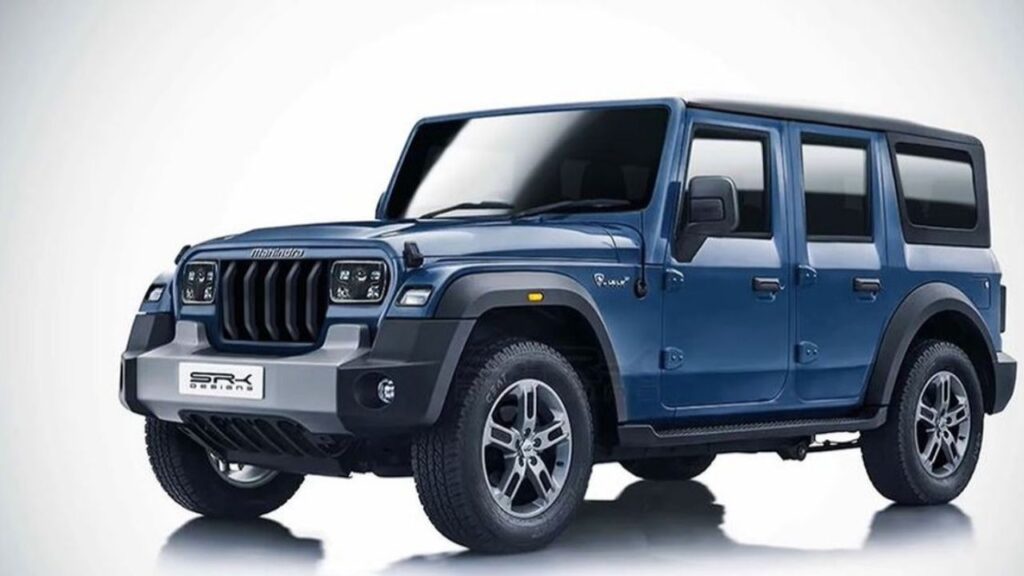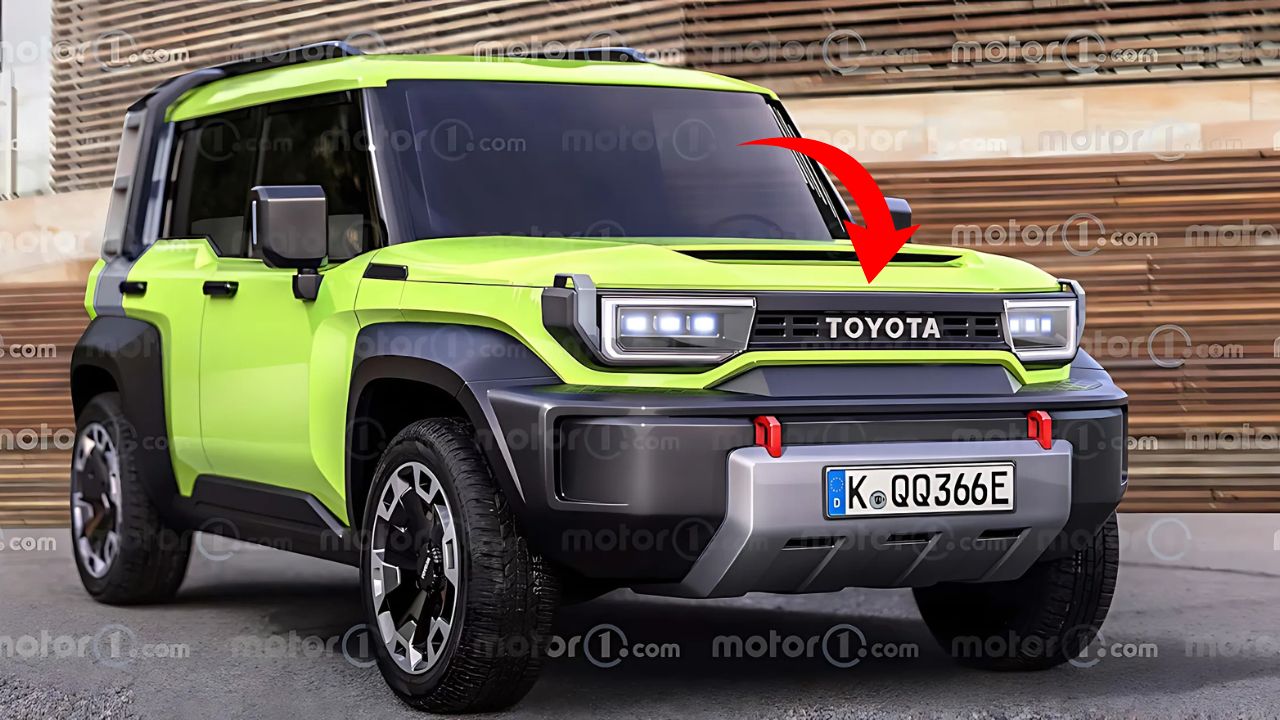The Toyota Land Cruiser has always represented the pinnacle of off-road capability, but the 2025 model takes this legacy to unprecedented levels. With a starting price that breaks the $100,000 barrier, this isn’t just another SUV – it’s a statement about serious adventure travel. The question isn’t whether it’s expensive, but whether anything else can match its combination of luxury, capability, and legendary reliability.
For decades, the Land Cruiser has served as the vehicle of choice for explorers, aid workers, and government agencies operating in the world’s most challenging environments. The 2025 model continues this tradition while adding contemporary luxury and technology that rivals the finest premium SUVs.

Pricing Structure and Market Position
The 2025 Toyota Land Cruiser starts at $101,500 for the base Heritage Edition, making it Toyota’s most expensive SUV by a significant margin. This pricing puts it in direct competition with luxury off-road specialists like the Mercedes G-Class and Land Rover Range Rover, rather than mainstream three-row family haulers.
Toyota’s decision to price the LandCruiser at this level reflects both the vehicle’s capabilities and the company’s understanding of its target market. These buyers aren’t comparison shopping with Honda Pilots or Chevrolet Traverses. They’re choosing between vehicles that can traverse the Australian Outback, navigate African game reserves, or climb Rocky Mountain trails with equal confidence.
Trim Level Analysis
The Heritage Edition provides substantial equipment even at the base price point. Standard features include full-time four-wheel drive, locking center and rear differentials, and Toyota’s Crawl Control system for extreme off-road situations. The interior features premium leather seating, heated and ventilated front seats, and a comprehensive infotainment system.
Moving up to the 1958 Edition adds $8,000 but includes unique design elements that pay homage to the LandCruiser’s 1958 debut. Special bronze-colored wheels, heritage badging, and exclusive interior treatments justify the premium for buyers seeking distinctive styling. The mechanical capabilities remain identical to the Heritage Edition.
The range-topping Premium Edition commands $110,000 but adds features like a 14-speaker JBL audio system, panoramic moonroof, and advanced driver assistance technologies. While expensive, these features rival those found in luxury sedans costing similar amounts.
Value Proposition
Comparing the LandCruiser’s pricing to competitors reveals interesting perspectives on value. The Mercedes G550 starts at $139,900, while the Range Rover begins at $104,500. Both of these vehicles offer similar luxury appointments but arguably less proven off-road reliability than the Toyota.
The LandCruiser’s value becomes clearer when considering total cost of ownership. Toyota’s reputation for reliability and durability means fewer unexpected repairs and higher resale values. Many LandCruisers from the 1990s still command premium prices in global markets, testament to their longevity.
Engine Performance and Capability
Under the hood sits Toyota’s twin-turbocharged 3.5-liter V6 engine producing 409 horsepower and 479 lb-ft of torque. This represents a significant increase over the previous generation’s naturally aspirated V8, while also improving fuel economy. The engine connects to a 10-speed automatic transmission that provides smooth shifts both on-road and during low-speed rock crawling.
The powerplant delivers impressive performance for such a substantial vehicle. Zero to 60 mph acceleration takes just 6.1 seconds, which rivals many sports sedans. More importantly for LandCruiser buyers, the engine provides abundant low-end torque for towing and climbing steep grades.
Four-Wheel Drive System
Toyota’s full-time four-wheel drive system represents decades of engineering refinement. The system distributes power between front and rear axles automatically, but drivers can lock the center differential for maximum traction in challenging conditions. Electronic locking rear differential further enhances capability when one wheel loses traction completely.
The Multi-Terrain Select system allows drivers to optimize the vehicle’s behavior for different surface conditions. Settings for mud, sand, rock, and snow adjust throttle response, transmission shift points, and traction control operation. These aren’t just marketing gimmicks – they provide real benefits in appropriate conditions.
Towing and Payload
Maximum towing capacity reaches 8,100 pounds when properly equipped, making the LandCruiser suitable for hauling substantial trailers or boats. The integrated trailer brake controller and trailer sway control provide confidence when towing in challenging conditions. Payload capacity of 1,765 pounds allows for significant cargo loading without compromising performance.
The rear suspension uses a sophisticated four-link coil spring design that maintains ride quality while providing excellent load-carrying capability. This system outperforms the leaf springs used by many truck-based competitors, especially when loaded heavily.
Off-Road Technology and Features
Toyota has equipped the 2025 LandCruiser with an impressive array of off-road assistance technologies. Crawl Control acts like cruise control for extreme off-road situations, maintaining steady speeds as low as 1 mph while the driver focuses solely on steering. This system proves invaluable when navigating technical terrain that would challenge even experienced off-road drivers.
The Multi-Terrain Monitor provides camera views of areas around the vehicle that aren’t visible from the driver’s seat. Front, side, and rear cameras help navigate tight trails or position the vehicle precisely on challenging obstacles. The system updates in real-time and provides genuinely useful information rather than just displaying pretty graphics.
Suspension System
The Kinetic Dynamic Suspension System (KDSS) automatically adjusts anti-roll bar stiffness based on driving conditions. On-road, the system maintains stability and reduces body roll during cornering. Off-road, it allows maximum wheel articulation for maintaining traction over uneven terrain. This technology provides benefits that most drivers will never fully utilize, but it demonstrates Toyota’s commitment to ultimate capability.
Ground clearance measures 9.6 inches, which matches or exceeds most dedicated off-road vehicles. Approach, departure, and breakover angles all favor serious trail navigation. The underbody protection includes skid plates for the fuel tank, transmission, and transfer case.
Water Fording Capability
The LandCruiser can ford water up to 28 inches deep, which exceeds most flooding situations encountered on public roads. Special sealing protects electrical components, while elevated air intake prevents engine damage from water ingestion. This capability reflects the vehicle’s design for global markets where river crossings might be routine parts of daily travel.
Emergency situations like flash flooding become less threatening when you’re driving a vehicle designed for such challenges. The confidence that comes from knowing your vehicle can handle unexpected conditions provides peace of mind that luxury car buyers rarely consider.
Interior Design and Luxury Features
Step inside the 2025 LandCruiser and you’ll find an interior that justifies the premium pricing. The cabin combines rugged functionality with genuine luxury materials in ways that few vehicles achieve successfully. Leather surfaces feel substantial rather than cheap, while metal trim pieces provide tactile quality that plastic imitations can’t match.
The driver’s seat provides excellent visibility in all directions, which proves crucial during off-road navigation. The high seating position offers commanding views of surrounding terrain, while large windows and minimal blind spots aid in tight maneuvering. Power seat adjustments include memory settings for multiple drivers.
Technology Integration
The 12.3-inch touchscreen infotainment system provides clear graphics and responsive operation. Toyota’s interface design prioritizes functionality over flashiness, which makes sense given the LandCruiser’s intended use. Physical controls for climate and audio functions remain easily accessible while wearing gloves or during bouncy off-road driving.
Wireless Apple CarPlay and Android Auto integration works seamlessly with most smartphones. The system also includes Toyota’s native navigation with off-road mapping capabilities. These maps show trail ratings, difficulty levels, and points of interest that standard GPS systems ignore completely.
Seating and Comfort
Three rows of seating provide accommodation for up to eight passengers, though the third row works best for children or short-distance adult passengers. The second row offers genuine comfort for adults, with adequate legroom and supportive seat cushions. Climate controls for all three rows help maintain comfort in extreme temperatures.
All seating surfaces use high-quality leather that should wear well over time. The front seats include heating and ventilation functions, while second-row captain’s chairs (available on higher trims) add heating capability. These features prove especially valuable during extended outdoor adventures.
Fuel Economy and Real-World Performance
EPA ratings show 17 mpg city, 22 mpg highway, and 19 mpg combined, which represents improvement over the previous V8-powered model. While these numbers won’t impress Prius owners, they’re competitive among full-size off-road SUVs. More importantly, real-world testing suggests these ratings are achievable with normal driving habits.
The 24.6-gallon fuel tank provides a theoretical range of approximately 470 miles on the highway, though real-world range varies significantly based on driving conditions and habits. Off-road driving typically reduces fuel economy substantially, but the large tank helps compensate for increased consumption during adventure travel.
Performance Characteristics
The twin-turbo V6 provides smooth, refined power delivery that doesn’t feel forced or artificial. Unlike some turbocharged engines that exhibit significant lag, this unit responds promptly to throttle inputs. The power band suits the LandCruiser’s character perfectly – strong low-end torque for towing and climbing, with sufficient high-end power for highway merging.
Transmission programming favors smooth operation over sporty characteristics. Shift points occur early to maximize fuel economy during normal driving, but the transmission will hold gears longer when it detects spirited driving or towing loads. Manual shift mode provides driver control when needed, though most situations don’t require intervention.
Highway Behavior
Despite its off-road focus, the LandCruiser behaves well on highways and city streets. The suspension soaks up road imperfections without feeling floaty or disconnected. Steering provides appropriate feedback for a vehicle of this size and purpose, though it doesn’t pretend to offer sports car precision.
Wind and road noise remain well-controlled at highway speeds. Toyota invested significant effort in sound deadening, which pays dividends during long-distance travel. The cabin remains quiet enough for normal conversation even at 75 mph cruising speeds.
Safety and Driver Assistance
Toyota Safety Sense 2.0 comes standard across all LandCruiser trim levels. This comprehensive suite includes pre-collision warning with automatic emergency braking, lane departure alert with steering assist, adaptive cruise control, and automatic high beams. These features work effectively in most driving situations, though some require adjustment for off-road use.
The blind spot monitoring system proves particularly valuable given the LandCruiser’s substantial size. Rear cross-traffic alert helps when backing out of parking spaces, especially important when visibility is limited by the spare tire mounted on the rear door.
Advanced Safety Features
Higher trim levels add features like driver attention monitoring and road sign recognition. These systems work subtly in the background, providing alerts when they detect potentially dangerous situations. The systems learn individual driving patterns and adjust their sensitivity accordingly.
The 360-degree camera system provides excellent visibility when parking or maneuvering in tight spaces. Image quality is sharp enough to be genuinely useful, and the system responds quickly to steering inputs. This feature proves especially valuable during off-road navigation where precise positioning matters.
Structural Safety
The Land Cruiser’s body-on-frame construction provides inherent strength advantages over unibody designs. The separate chassis and body allow for greater structural integrity during extreme use, while also enabling easier repairs in remote locations. This construction method adds weight but provides durability benefits that justify the trade-off.
Crumple zones, multiple airbags, and advanced restraint systems provide protection during collisions. While the LandCruiser hasn’t undergone formal safety testing by IIHS or NHTSA at the time of writing, Toyota’s engineering typically produces vehicles that perform well in such evaluations.
Global Perspective and Heritage
The LandCruiser’s reputation extends far beyond American borders, where it serves in some of the world’s most challenging environments. From Australian mining operations to African conservation efforts, the LandCruiser has earned its reputation through decades of reliable service in conditions that destroy lesser vehicles.
This global perspective influences every aspect of the vehicle’s design. Components must withstand extreme temperatures, contaminated fuel, and minimal maintenance schedules. The engineering that enables such durability also benefits American buyers who simply want reliable transportation for weekend adventures.
Cultural Significance
In many developing nations, the LandCruiser represents the ultimate transportation solution. Its ability to traverse impossible terrain while carrying substantial loads makes it invaluable for commerce, aid delivery, and government operations. This reputation for capability creates strong resale values worldwide.
American buyers benefit from this global appreciation through strong resale values and parts availability. A well-maintained LandCruiser often appreciates in value over time, especially in markets where new vehicle availability is limited.
Maintenance and Ownership
Toyota’s reputation for reliability means the LandCruiser should provide years of trouble-free service with proper maintenance. Service intervals follow conventional schedules, though severe-duty use (which includes most off-road driving) requires more frequent attention. Oil changes, filter replacements, and fluid services remain straightforward and reasonably priced.
The body-on-frame construction enables easier repairs compared to unibody designs. Individual components can often be replaced or rebuilt without affecting other systems. This modularity proves valuable for owners who keep their vehicles for extended periods or use them in demanding conditions.
Dealer Network and Support
Toyota’s extensive dealer network provides service availability in most areas, though not all dealers possess equal off-road expertise. Urban dealers might struggle with specialized modifications or extreme-use repairs, while dealers in rural areas often develop stronger capabilities for outdoor enthusiasts.
Parts availability remains excellent for most components, with Toyota maintaining strong inventory levels for popular items. Some specialized off-road components might require special ordering, but basic maintenance items remain readily available.
Long-Term Value
LandCruisers typically hold their value exceptionally well, often outperforming luxury cars and mainstream SUVs. The combination of proven reliability, global demand, and limited production numbers creates strong resale markets. Many owners find their vehicles appreciate rather than depreciate over time.
This value retention makes the high initial purchase price more palatable when viewed over an extended ownership period. Buyers who maintain their vehicles properly often recover substantial portions of their investment when it’s time to upgrade.
Competition and Market Analysis
The Land Cruiser competes in a unique segment where capability often matters more than conventional luxury features. Direct competitors include the Mercedes G-Class, Range Rover, and Lexus GX, though each vehicle offers different strengths and weaknesses.
The Mercedes G-Class provides similar off-road capability with more contemporary luxury features, but at significantly higher prices. Range Rover offers sophisticated air suspension and modern technology, though reliability concerns persist. The Lexus GX shares the Land Cruiser’s mechanical foundation while adding luxury brand cachet and dealer experience.
Target Market
Ideal Land Cruiser buyers value capability over flashiness and reliability over the latest technology trends. These buyers often have specific outdoor activities that require genuine off-road performance. They might tow large trailers, navigate challenging terrain regularly, or simply want the confidence that comes from owning an extremely capable vehicle.
Many buyers also appreciate the Land Cruiser’s understated appearance compared to flashier luxury SUVs. The vehicle makes a statement about priorities rather than income levels.
Future Considerations

The 2025 Land Cruiser represents Toyota’s commitment to maintaining the model’s core values while adapting to contemporary requirements. Future versions will likely incorporate electrification technologies, though the company has stated that capability and reliability remain primary concerns.
Regulatory pressures regarding fuel economy and emissions will continue influencing design decisions. However, the Land Cruiser’s role in global markets means Toyota must balance these requirements against the need for ultimate durability and capability.
Investment Perspective
For buyers considering the Land Cruiser as a long-term investment, the combination of proven reliability, strong resale values, and unique capabilities creates compelling arguments. While $100,000 represents substantial money, the total cost of ownership often compares favorably to vehicles with lower purchase prices but higher maintenance costs and faster depreciation.
The emotional satisfaction of owning a vehicle that can handle virtually any challenge shouldn’t be underestimated either. This intangible benefit adds value that purely financial calculations can’t capture.
Frequently Asked Questions
Q: Is the $100,000 price justified for a Toyota SUV?
A: The Land Cruiser offers unique capabilities, luxury features, and legendary reliability that justify premium pricing compared to mainstream SUVs, competing directly with luxury off-road specialists.
Q: How does fuel economy compare to other full-size SUVs?
A: At 19 mpg combined, the Land Cruiser matches or exceeds most full-size, body-on-frame SUVs while providing superior off-road capability and towing capacity.
Q: Can the Land Cruiser handle serious off-road adventures?
A: Yes, the Land Cruiser is designed for extreme off-road use with features like locking differentials, Crawl Control, and 28-inch water fording capability that exceed most recreational needs.

